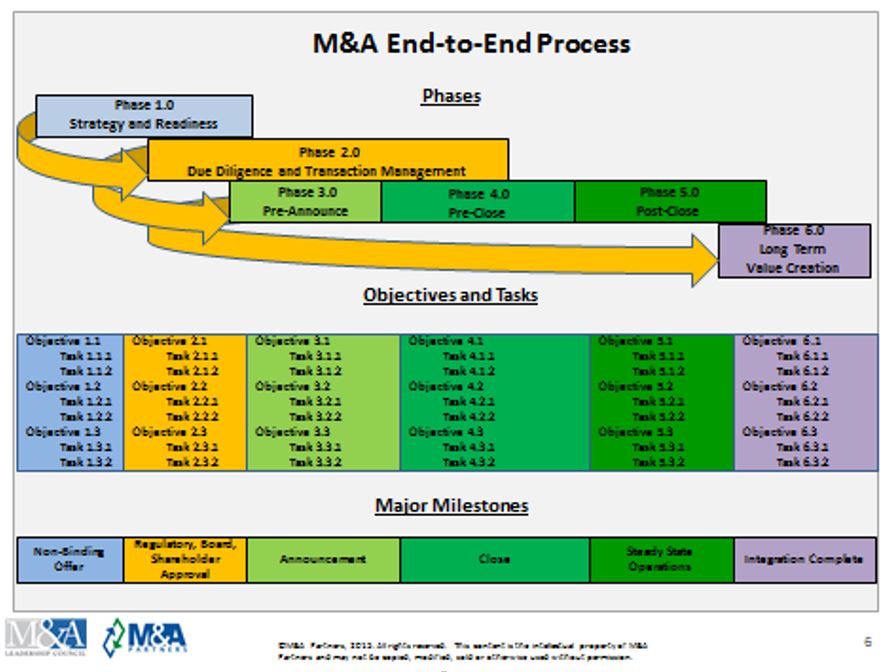Agility and Discipline Required
by Stephanie Snyder, Senior Parter at M&A Partners

Today’s mergers, acquisitions, joint ventures and divestitures are more complex than ever. Integration Program Managers, Project Managers and Functional Team Leaders are being asked to deal with a multitude of new demands. The modern challenges include deals that are larger, scattered across multiple geographies/business units/cultures, more transformational in nature than simple bolt-ons or tuck-ins, and/or may be running simultaneously with other acquisitions or major growth or improvement projects. Many of these competing initiatives may be sucking up senior management’s time and attention, scarce investment dollars and precious internal resources needed for the project at hand. In other words, these projects are simply… more complicated.
Agility and Discipline: Contrasting, but Complementary Skill Sets
We believe one of the critical success factors for effectively managing today’s complex programs and projects is a balance of agility and discipline. Both are required, but there are specific times in the deal life cycle when one competency trumps the other. The challenge is to identify and train your internal project management resources to understand when and how to apply each competency effectively.
Cycles of Project Management in Deal Environments
Anyone familiar with classic Project Management will recognize the familiar cycles that all well-managed projects should follow: Initiating, Planning, Executing, Controlling and Closing. What’s unique about mergers, acquisitions, joint ventures and divestitures is that they require a series of these cycles that repeat across the end-to-end deal. Program and Project Managers are responsible for designing and executing these cycles. To do so effectively, they need to understand how to plan with agility and then execute with discipline and rigor.
Six Cycles to Program Management Success
Working from front to back of the end-to-end M&A life cycle, there are six overlapping, but distinct phases which must be managed:
- Phase 1: Strategy and Readiness
- Phase 2: Due Diligence and Transaction Management
- Phase 3: Pre-Announce
- Phase 4: Pre-Close
- Phase 5: Post-Close
- Phase 6: Long Term Value Creation

Each of these phases contains the classic Project Management domains of initiating, planning, executing, controlling and closing. When done right, the information gained in each phase of the project lays the foundation for the phase to follow. This iterative design approach is more representative of agile project management because it requires program leaders to re-launch each phase of the project with clear goals, documented objectives, a confirmed budget and the right resources. There is simply too much uncertainty and ambiguity at the beginning of these complex projects to plan the entire life cycle.
Knowing What to Do When…and How to Do It
To satisfy that demand for more modern and comprehensive training, the M&A Leadership Council has designed a course specifically for Program and Project Managers working in complex merger, acquisition, joint venture and divestiture environments.
This workshop is a two-day deep dive into what Program and Project Managers need to do at each phase of the project life cycle. It is an interactive deep dive into agile planning and tactical execution. It includes both the planning templates and the execution tools required for complex program and project management success.
For more information, go to macouncil.org: The Art of M&A Program Management, October 8-9, 2015 - Dallas, TX.